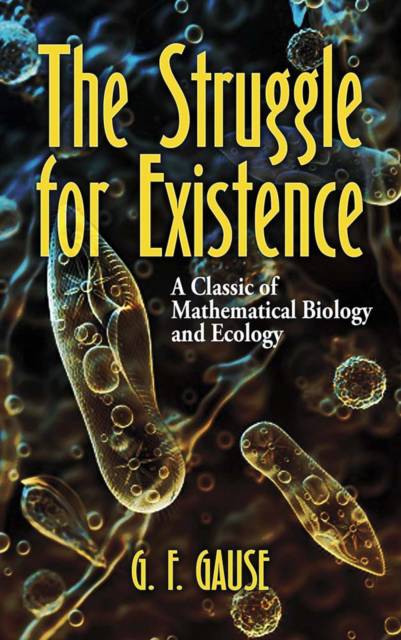
- Afhalen na 1 uur in een winkel met voorraad
- Gratis thuislevering in België vanaf € 30
- Ruim aanbod met 7 miljoen producten
- Afhalen na 1 uur in een winkel met voorraad
- Gratis thuislevering in België vanaf € 30
- Ruim aanbod met 7 miljoen producten
Zoeken
€ 17,45
+ 34 punten
Omschrijving
This work by Russian microbiologist G. F. Gause broke ground for all subsequent research in the biomathematics of populations. Gause's work is essential in giving modern science its grasp of the complexities of population competition; it depicts a microcosm of the process at work on a larger scale throughout the biosphere, and it provides readers with the means for the process's quantitative evaluation.
Starting with an exploration of the struggle for existence in nature, Gause summarizes the theoretical and experimental work that preceded his own. A discussion of the tools of mathematical biology follows, deriving formulas for the measurement of such basic concepts as potential population increase, population saturation, environmental resistance, and the intensity of the struggle for existence. Gause then reports in depth on his own experimental work and his conclusions: that the periodic expansions and contractions of populations are dependent upon the introduction of new variables and are not an inherent property of the predator-prey relationship. Easily understood by anyone acquainted with higher mathematics, this book constitutes essential reading for modern students of population dynamics.
Starting with an exploration of the struggle for existence in nature, Gause summarizes the theoretical and experimental work that preceded his own. A discussion of the tools of mathematical biology follows, deriving formulas for the measurement of such basic concepts as potential population increase, population saturation, environmental resistance, and the intensity of the struggle for existence. Gause then reports in depth on his own experimental work and his conclusions: that the periodic expansions and contractions of populations are dependent upon the introduction of new variables and are not an inherent property of the predator-prey relationship. Easily understood by anyone acquainted with higher mathematics, this book constitutes essential reading for modern students of population dynamics.
Specificaties
Betrokkenen
- Auteur(s):
- Uitgeverij:
Inhoud
- Aantal bladzijden:
- 176
- Taal:
- Engels
- Reeks:
Eigenschappen
- Productcode (EAN):
- 9780486838298
- Verschijningsdatum:
- 16/10/2019
- Uitvoering:
- Paperback
- Formaat:
- Trade paperback (VS)
- Afmetingen:
- 137 mm x 213 mm
- Gewicht:
- 204 g

Alleen bij Standaard Boekhandel
+ 34 punten op je klantenkaart van Standaard Boekhandel
Beoordelingen
We publiceren alleen reviews die voldoen aan de voorwaarden voor reviews. Bekijk onze voorwaarden voor reviews.








